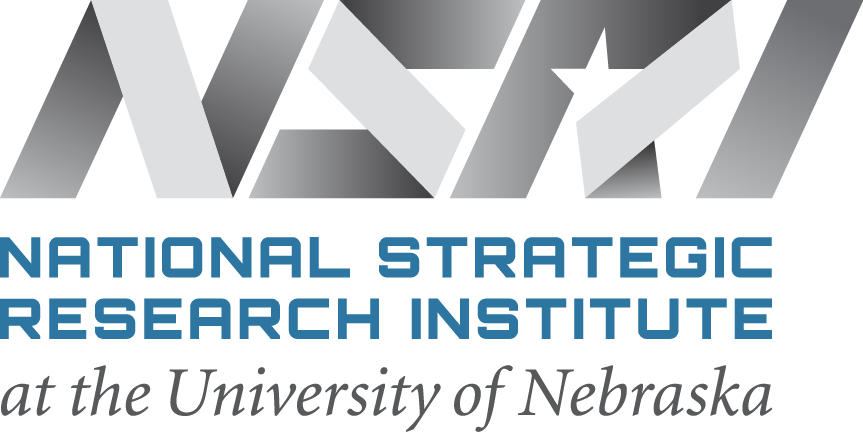
Dr. Brittany Duncan’s two-year-old son has a general sense of what she does for a living — albeit a simplified view, of course.
“He knows mommy is a robot doctor — he probably thinks I give robots shots!” Dr. Duncan laughed.
It can be challenging for her to describe to anyone exactly what she does at the Nebraska Intelligent MoBile Unmanned Systems (NIMBUS) Lab at the University of Nebraska–Lincoln.
“My dad just tells everyone I am a genius, and I am taking robots to the rainforest,” she said. “He also likes telling people about prescribed ignition drones that drop fireballs to control big fires.”
Dr. Duncan’s elevator pitch: She and her colleagues work with scientific research teams around the world to study unmanned aerial vehicles (UAVs) and emerging ways human beings interact with flying robots.
Dr. Joshua M. Peschel, assistant professor in the department of Department of Agricultural and Biosystems Engineering at Iowa State University, is a long-time colleague of Dr. Duncan, working with her on projects such as small robot boats that search for missing people and flying robots that capture samples in rainforest tree canopies.
“The new research gives robots greater capabilities and people lower barriers for use,” he said, “both of which have resulted in new data and results for scientific disciplines and society."
The NIMBUS lab also has contributed fundamental research impacting everyday UAV uses, such as Amazon’s well-known use of UAVs to deliver packages. Through the National Strategic Research Institute (NSRI) at the University of Nebraska, Dr. Duncan and colleagues are innovating new ways to use robotics as a force multiplier and safeguard for warfighters.
As an undergraduate, Duncan developed a special interest in “field robots” with specially trained end users. In graduate school, she told her advisor that she had always wanted to be a pilot, and that’s how she discovered the field of flying robots in 2009. At the time, flying UAVs required a pilot’s license.
Her doctoral work included teaching, and she fell in love with the idea of being a professor, so she could provide opportunities for students to work with real-world projects. Her dissertation was about modeling human-robot interaction.
All of this perfectly prepared Dr. Duncan for a position at the NIMBUS Lab. In 2015, the lab was looking for someone who worked specifically in human-robot interaction, and that’s how she came to Nebraska.
“I love what I do, and the fundamental research is great, but it is absolutely amplified by the co-directors of the lab, the students and everyone,” she said. “It wouldn’t be nearly as fun, and we wouldn’t be nearly as successful without everyone involved."
Dr. Duncan is one of only a handful of researchers in the U.S. who specializes in human-robot interaction, almost exclusively in field robotics. Dr. Peschel said he admires her ability to combine an understanding of many different fields — statistical methods, psychology, sociology — and how they intersect to make technology useful.
“She considers the people who interact with the robot just as important as the robot itself, and that is critically important,” Peschel said.
Collaboration is common in UAV research, which often intersects with other disciplines, and that is how the lab works with NSRI.
“NSRI sat in the middle, heard what was needed and knew we were one of the few labs that could do it,” Dr. Duncan said. “They made the match — we wouldn’t have ever come up with the project. And it has been the highlight of my career."
The first NSRI project for Dr. Duncan and the team was creating an aerial vehicle system that could fly into an area, deliver a load and then fly out, providing a way to help warfighters avoid harm.
“We weren’t even sure we could do it,” Dr. Duncan said. “NSRI said, ‘Why don’t you try.’ And we were successful."
The first prototype was not refined in any way. But the team, including students, fine-tuned and adapted the system.
According to Dr. Duncan, UAVs have an important role to play in the future of global conflict and defense, but the systems are also a risk.
“The vehicles are now small enough and cheap enough to be used by others,” she explained. “The opportunity in the current climate is to get more, better information to help us maintain our global understanding. Sensing movement of things, even diseases like COVID-19, can help us better understand threats. It gives us a way to leverage science and technology for global dominance. Through the NSRI work, we will continue to be leaders in areas like this."
The NIMBUS Lab teams have many exciting new projects on the drawing board, including onboard training software that slows inputs of novice users automatically to help avoid hazards as they learn.
By the time Dr. Duncan’s two-year-old son is an adult, many of the drones Dr. Duncan and her teams have worked on likely will be an integral part of our world.
“I hope they will be more heavily used by scientists to make things efficient and safer,” Dr. Duncan said.
Dr. Peschel suggests it won’t be easy.
“The end products of our work together often make what we do look very easy, like something out of Disney,” he said. “I think the world should know that how easy something is to use is often strongly related to the amount of time and effort expended.
"Nebraska is very fortunate to have Brittany Duncan.”
###
About the National Strategic Research Institute
Through the National Strategic Research Institute at the University of Nebraska leading scientists deliver innovative national security research, technology, product and strategy development, training and exercises, and subject matter expertise to the Department of Defense and other federal agencies. One of only 14 DOD-designated University Affiliated Research Centers in the country, NSRI is sponsored by U.S. Strategic Command and works to ensure the United States’ safety and preparedness against increasingly sophisticated threats. Read about our mission.

